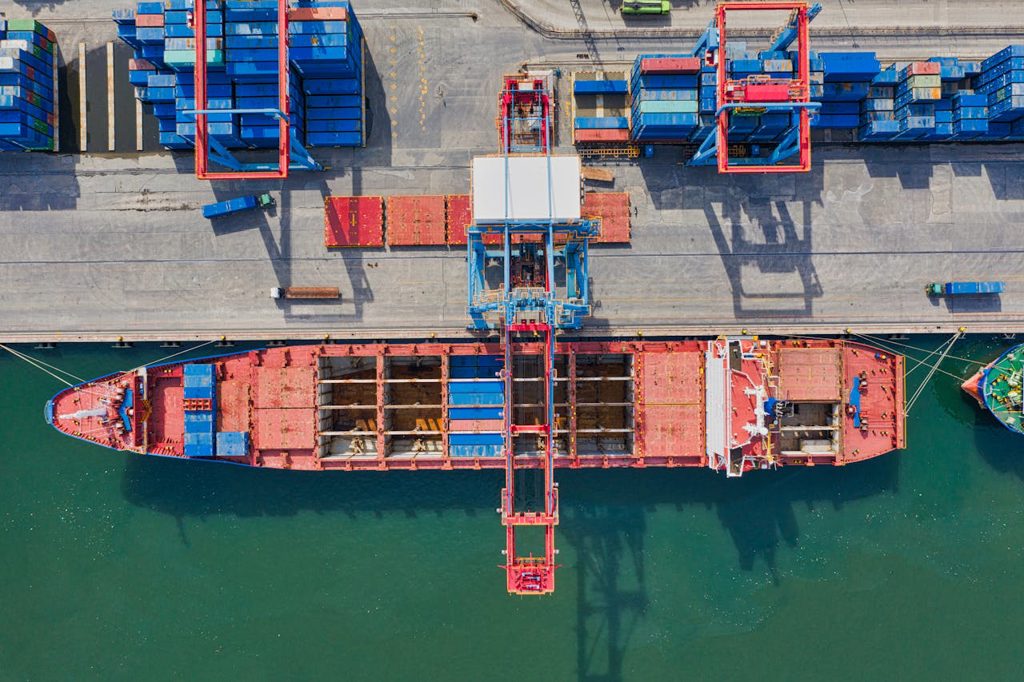Shipping vs. Replacing: A Lifecycle Cost Analysis to Save Thousands During a Cross-Country Move
Steven Capasso • 26 Nov, 2025

Moving
across the country is exciting, challenging, and expensive all at once. Every
decision, from choosing your new neighborhood to selecting the right
transportation options, shapes how smoothly the transition unfolds. Yet one of
the most overlooked parts of the relocation process is deciding whether it
makes more financial sense to ship your existing belongings or simply replace
them after arriving at your new home. Many people assume shipping is always the
cheaper option, while others are convinced that replacing everything is more
cost-effective. In reality, the best approach depends on the lifecycle cost of
each item, combined with your specific priorities, timeline, and long-term
budget. With a clear and thoughtful strategy in place, you can save thousands
during a cross-country move.
Understanding Lifecycle Cost Analysis During a
Cross-Country Move
Lifecycle
cost analysis is a method of comparing the total cost of owning an item over
time. Instead of looking only at the purchase cost, it evaluates repair
expenses, maintenance, shipping fees, disposal needs, and replacement expenses.
This approach is extremely valuable when relocating because it moves you away
from decisions based only on initial price tags and toward choices rooted in long-term
savings.
A
sofa, for example, might be inexpensive to replace but costly to ship.
Conversely, a high-quality dining table might cost more to replace than to
transport. When each item is examined through a lifecycle lens, the path to
smarter financial decisions becomes much clearer.
Evaluating the Emotional Value of Items
Not
every decision can or should be based purely on numbers. Sentimental value can
make certain belongings priceless, even if shipping them costs more than
replacing them. Items passed down through generations, childhood keepsakes, or
furniture with personal history carry emotional weight that is impossible to
quantify.
The
emotional value factor matters because it prevents you from making regretful
choices later. You may save a few hundred dollars by replacing something
special, but the long-term disappointment might outweigh the savings. The trick
is to blend both logic and sentiment so the final decision feels practical and
personally meaningful.
Comparing Replacement Costs in Today’s Market
Before
deciding to replace an item, it’s essential to understand the current cost of
acquiring something new. Prices for furniture, electronics, appliances, and
home goods can fluctuate dramatically based on economic conditions, supply
chain trends, and brand availability. Many people underestimate the cost of
replacing large items like beds, sofas, office equipment, and outdoor gear
until they arrive at their new home and face sticker shock.
It’s
also important to consider quality. If your existing furniture is durable and
built to last, replacing it with cheaper alternatives might seem cost-effective
at first, but those new items may wear out faster, leading to earlier
replacement. Lifecycle cost analysis encourages you to think beyond the price
you pay today and focus on how long an item will serve you in the future.

Compare replacement costs and save thousands during a cross-country move.
Understanding the True Cost of Shipping Belongings
Shipping
costs can vary widely depending on weight, size, distance, and service level.
Cross-country moves often involve long travel routes, fuel surcharges, labor
charges, packing services, and even temporary storage. Calculating these
expenses for each major item helps you determine whether shipping is genuinely
worthwhile.
If
you start feeling overwhelmed, make sure to look for a professional's opinion.
It's often enough to read through the shipping and moving services' websites to
get a clear picture of the costs in your area. For instance, Ready 2 Roll Moving is a moving company with years of
experience, and you can get insight into saving on relocation costs and the
moving planning process.
Another
aspect to consider is timing. If you need your belongings to arrive quickly,
expedited shipping will cost more. If you are flexible, you may secure a more
economical rate. Understanding the variables behind shipping fees ensures
you’re making informed choices rather than assumptions.
Analyzing the Condition and Age of Your Belongings
An
older item that has already reached most of its usable lifespan is usually not
worth the cost of transporting across the country. Even if it still works, it
may be close to needing repairs or losing its functionality. On the other hand,
newer items in excellent condition are strong candidates for shipping because
their remaining lifespan justifies the investment.
The
key is honesty. Ask yourself whether the item will continue serving you for
years or whether it’s already showing signs of wear. A cracked dresser, a lumpy
mattress, or a peeling desk may not be worth shipping even if the initial
purchase price was high. Lifecycle analysis helps you separate convenience from
value.
Hidden Costs People Often Overlook
Every
move comes with surprise expenses, and taking a closer look at these hidden costs often shifts the
shipping-versus-replacing decision. Some overlooked financial factors include
the cost of disposing of old items, hauling fees for curbside pickups, assembly
charges for new furniture, and price differences between cities.
Replacing
belongings in a high-cost-of-living area can stretch your budget far more than
expected. Shipping in these cases may provide better overall savings, even if
the upfront cost appears higher.
Additionally,
mistakes happen when moving. Incorrect measurements, delivery delays, and
out-of-stock products can force you to buy temporary replacements. Lifecycle
assessment helps prepare for these scenarios so you're not caught off guard.
Considering the Environmental Impact of Your Choice
Sustainability
is becoming increasingly important to many movers, and your decision to ship or
replace items can significantly affect the environment. Shipping a truck full
of belongings consumes fuel, but disposing of furniture and buying new
replacements also generates waste and contributes to manufacturing pollution.
Choosing
what to ship and what to replace with eco-friendly materials can lower your
carbon footprint. Donation centers, upcycling shops, and local selling
platforms allow you to rehome items instead of discarding them. This balance
makes your move more environmentally responsible without sacrificing your
financial goals.

Sustainability is becoming increasingly important to many movers.
Factoring in Setup Time After the Move
One
part of the shipping-versus-replacing equation that many people forget is the
cost of time. Replacing belongings often means spending days or even weeks
shopping, comparing prices, waiting for deliveries, and assembling furniture.
This can delay your ability to settle into your new home and add stress during
an already overwhelming period.
Shipping
items, on the other hand, allows you to unpack and arrange your home more
quickly, restoring a sense of normalcy. The faster you settle in, the easier it
becomes to resume work, daily routines, and hobbies. This convenience carries
value that goes beyond the purely financial.
Balancing Your Budget Without Sacrificing Comfort
Ultimately,
the decision to ship or replace should fit comfortably within your budget while supporting your
lifestyle and long-term goals. Everyone’s priorities differ. Some people value
convenience over savings, while others prefer to minimize shipping costs and
rebuild their homes with fresh items.
Lifecycle
cost analysis empowers you to customize your approach. You may decide to ship
high-value furniture, replace inexpensive décor, and sell older items that no
longer match your needs. This balanced method keeps your expenses under control
without compromising comfort, aesthetics, or practicality.
The Greatest Long-Term Value
Decide whether to ship or replace and save thousands during a cross-country move. When you base your decision on lifecycle cost analysis, the process becomes clearer, smarter, and more financially rewarding. Instead of reacting to moving expenses as they arise, you anticipate them, compare your options, and choose the path that offers the greatest long-term value. By considering the age, condition, sentimental value, replacement cost, environmental impact, and setup time of each item, you create a moving strategy built on intention rather than assumptions. Whether you choose to ship cherished belongings or refresh your living space with new purchases, your decisions become more confident and more cost-effectively.
Pics:
https://www.pexels.com/photo/aerial-photo-of-cargo-ship-near-intermodal-containers-2231744/
https://www.pexels.com/photo/person-counting-cash-money-4475525/
https://www.pexels.com/photo/person-s-left-hand-holding-green-leaf-plant-886521/





